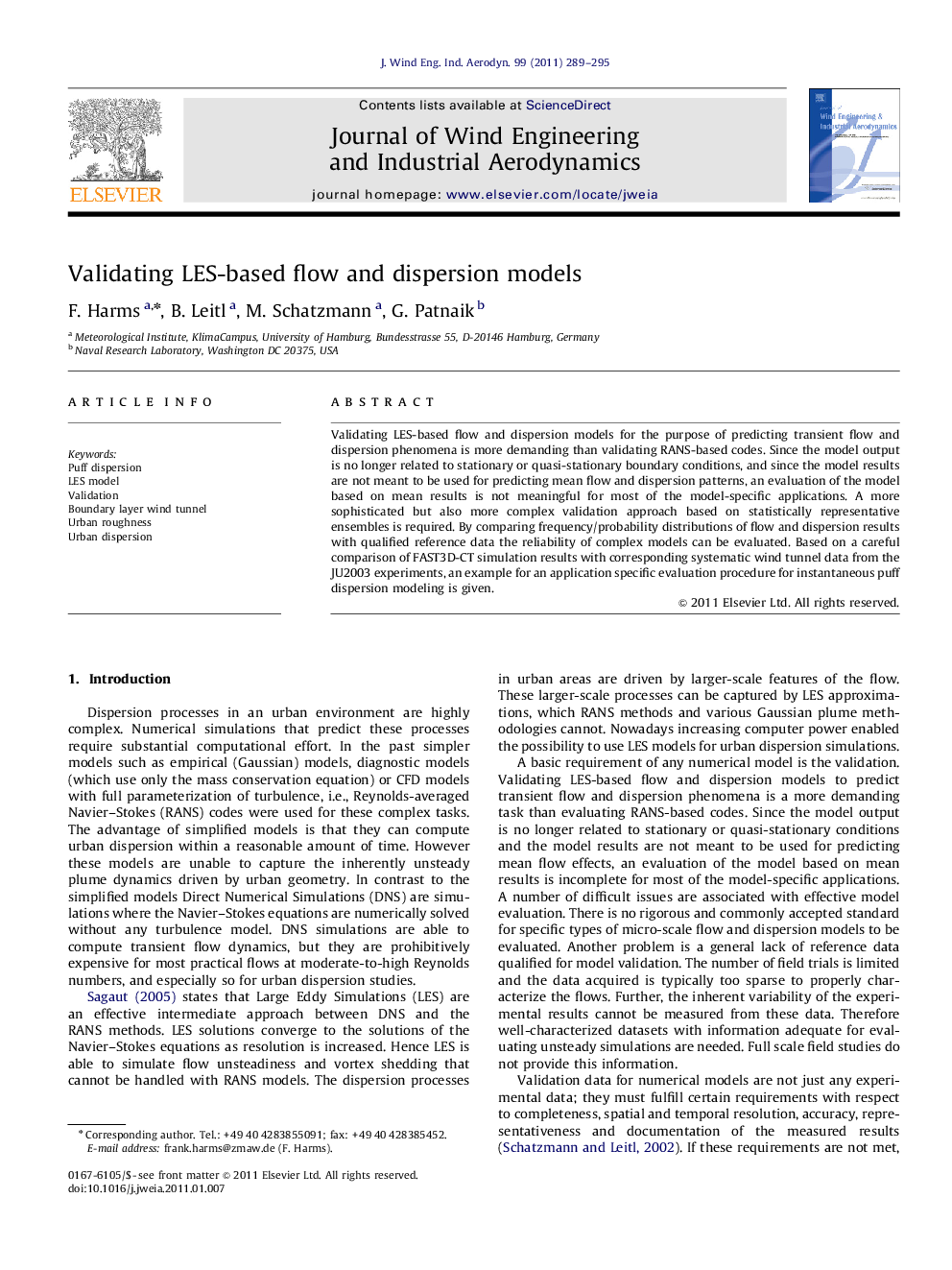| Article ID | Journal | Published Year | Pages | File Type |
|---|---|---|---|---|
| 293108 | Journal of Wind Engineering and Industrial Aerodynamics | 2011 | 7 Pages |
Validating LES-based flow and dispersion models for the purpose of predicting transient flow and dispersion phenomena is more demanding than validating RANS-based codes. Since the model output is no longer related to stationary or quasi-stationary boundary conditions, and since the model results are not meant to be used for predicting mean flow and dispersion patterns, an evaluation of the model based on mean results is not meaningful for most of the model-specific applications. A more sophisticated but also more complex validation approach based on statistically representative ensembles is required. By comparing frequency/probability distributions of flow and dispersion results with qualified reference data the reliability of complex models can be evaluated. Based on a careful comparison of FAST3D-CT simulation results with corresponding systematic wind tunnel data from the JU2003 experiments, an example for an application specific evaluation procedure for instantaneous puff dispersion modeling is given.
